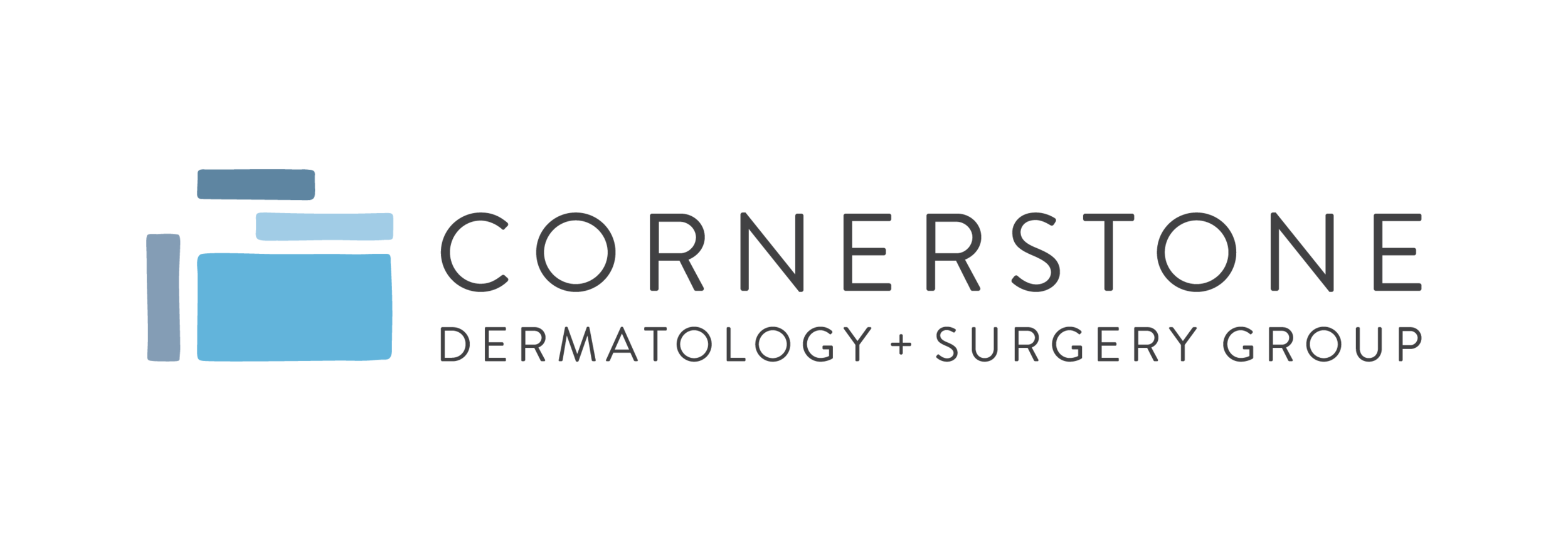A Complete Guide to a Skin Cancer Screening with Your Dermatologist
What to Expect from Your Dermatologist During Your Annual Skin Cancer Screening
The first thing that goes through many people's minds when they schedule a skin cancer screening is, "Do I have to take off all my clothing?"
Your health and safety are our top priority, so we’ll need to inspect every inch of your skin to make sure we don’t miss a thing. Yes, you’ll need to don a gown, but we always do our best to ensure the most comfortable experience for you at Cornerstone Dermatology & Surgery Group.
Knowledge is power, and it can inspire confidence. By outlining the process of a skin cancer screening visit in its entirety, I aim to put your mind at ease, empowering you check that skin cancer screening off your ‘to do’ list.
The Value of Skin Cancer Screening
First, the facts … and we think they make a very compelling case for scheduling your skin cancer screening ASAP!
Did you know that the skin is the largest organ in the body and more people are diagnosed with skin cancer each year than any other type of cancer? To give you an idea of how many people are affected by skin cancer, one in five Americans will be diagnosed by the age of 70.
And if you’ve ever gotten a sunburn or used a tanning bed, your risks automatically increase.
Having more than five sunburns in your lifetime doubles your risk for melanoma. Studies have found that indoor tanning bed usage can increase users’ risk of developing squamous cell carcinoma by 58 percent and basal cell carcinoma by 24 percent.
The good news is that skin cancer is largely curable if caught in its early stages. When caught early, melanoma (the worst type of skin cancer) has a 99 percent five-year survival rate.
How to Get Ready for Your Skin Cancer Screening
To get the very most out of your skin cancer screening, we recommend that you take the following steps to prepare for your visit.
Know your own skin. We recommend regular at-home skin self-exams using the ABCDE’s of melanoma as your guide as you observe spots that are new, changing, growing or otherwise irregular. You can print this skin cancer body mole map, document any suspicious spots, and bring it to your appointment.
Bring a list of all the drugs you're presently taking, as well as a brief overview of your medical history. Your susceptibility to developing certain forms of skin cancer can increase with certain health conditions and medications.
Remove all makeup before your appointment. We know that this is sometimes a challenge for patients who don’t want to go about their day bare-faced! If you need to wear makeup, please arrive at your appointment early and cleanse your face in the patient restroom before you see your dermatology provider.
Remove any nail polish prior to your skin cancer screening, as cancer can form under and around your nails.
Wear your hair down or loose. Your dermatologist will need to inspect your scalp.
Wear clothing that allows for an easy change into a gown. If you do wear undergarments below your gown, wear something that’s easy to push aside so your dermatology provider can do a complete exam.
What Happens During a Skin Cancer Screening
Although the actual skin cancer screening should only take about 10 minutes, we usually tell patients to set aside about an hour for the entire appointment.
You will be given a gown and shown to a private room by a clinical assistant. Your dermatology provider will want to see every inch of your skin, so please be sure to remove all makeup, clothing, accessories and nail paint that could prevent us from providing a comprehensive exam.
If you feel anxious about wearing nothing under your gown, just wear undergarments or even a two-piece swimsuit that can be moved aside during your exam.
During your skin cancer screening, your dermatology provider will examine you from head to toe. You may notice us using something that looks like a magnifying glass with a light on it. This is called a dermatoscope, and it is a specialized tool that allows us to more clearly differentiate lesions with the use of polarized light plus magnification.
In order to track the development and progression of moles and other skin lesions, your dermatologist may take clinical photographs of them during the visit.
After your head-to-toe exam, your dermatology provider will bring up any moles or lesions that have raised red flags. If there are areas of concern, we may perform a biopsy during this visit, or a future appointment may be necessary for your biopsy.
If a biopsy is necessary, we’ll provide a local anesthetic to numb the area. This injection may sting, but then the biopsy itself is quick and painless! The type of biopsy performed will depend on the size, location and potential diagnosis.
A shave biopsy involves using a straight, flexible blade to collect a sample of the surface of the lesion. A punch biopsy, which resembles a little cookie cutter, can be used to remove a deeper portion of the lesion.
Following a Skin Cancer Screening
After a skin cancer screening, your dermatologist will go through any concerns you may have and suggest a follow-up visit schedule. Depending on your medical background, risk factors, and the results of your dermatologist's physical exam, this might be anywhere from six months to a year.
If your dermatologist took a biopsy during your visit, you should expect to hear back from the clinic within two weeks to review the results and future actions.
We all want your biopsy results to come back as ‘benign,’ but if you do receive a diagnosis of skin cancer, we are prepared to treat you from start to finish.
Depending on the type of cancer, we may recommend surgical excision or Mohs Micrographic Surgery. If your results appear to be more invasive and to have spread to other areas of the body beyond the skin, we will work with other providers to provide a diagnosis and treatment.
Mohs micrographic surgery is the best treatment option if your dermatology provider detects non-melanoma skin cancer on a highly visible or sensitive part of your body, such as your face, neck, ears, or hands. Mohs surgery offers the highest cure rate and least scarring for basal cell and squamous cell carcinoma.
I am double-board certified in dermatology and Mohs surgery, and offer this as a treatment option at Cornerstone Dermatology. My patients appreciate having this surgery performed in our outpatient clinic under local anesthetic because it allows them to avoid costly surgery center fees, and they leave the office the same day knowing they are skin-cancer free!
I hope that this blog post has helped you gain a better understanding of skin cancer screening, as well as diagnosis and treatment. Please contact us at Cornerstone Dermatology if you have any questions. We appreciate the opportunity to be your local resource for skin cancer detection and treatment in Lee’s Summit and the wider Kansas City metro area!

